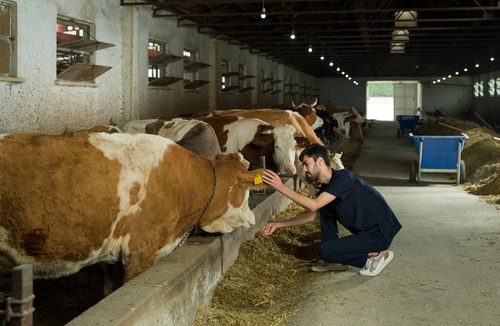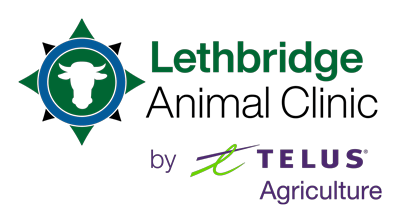Abscesses in Cattle: What You Should Know
When managing a cattle herd, maintaining the health and well-being of your animals is a top priority. One issue that cattle owners may encounter is abscesses. These localized infections can cause discomfort and complications if not addressed promptly. In this article, we will explore abscesses in cattle, their causes, symptoms, and prevention strategies, ensuring you have the knowledge needed to keep your herd healthy. For further assistance, please call Lethbridge Animal Clinic at (403) 327-4150.

What is an Abscess?
An abscess is a pocket of pus that forms in the tissue, often resulting from an infection. In cattle, abscesses can develop anywhere on the body but are most commonly found on the neck, head, and limbs. The pus within an abscess consists of dead cells, bacteria, and white blood cells, creating a painful and sometimes swollen area on the animal. Understanding how abscesses form and the risks they pose is crucial for effective management.
Causes of Abscesses in Cattle
Abscesses in cattle are typically caused by bacterial infections. The most common bacteria responsible for these infections include Staphylococcus, Streptococcus, and Corynebacterium species. These bacteria can enter the body through various means:
- Wounds and Injuries: Cuts, punctures, and other injuries provide an entry point for bacteria. Even minor wounds can become infected if not properly cleaned and treated.
- Injection Sites: Improper injection techniques or unsterile equipment can introduce bacteria into the tissue, leading to abscess formation.
- Contaminated Environment: Dirty living conditions and contaminated equipment can increase the risk of bacterial infections, contributing to the development of abscesses.
Symptoms of Abscesses in Cattle
Recognizing the symptoms of abscesses in cattle is essential for early detection and treatment. Common signs include:
- Swelling
- Pain and discomfort
- Heat and redness
- Fever
- Loss of appetite
Diagnosing Abscesses in Cattle
Accurate diagnosis of abscesses in cattle involves a combination of physical examination and diagnostic tests. Your veterinarian may perform the following:
- Physical Examination: A thorough examination of the affected area to assess the size, location, and characteristics of the abscess.
- Needle Aspiration: Using a sterile needle to extract pus from the abscess for bacterial culture and sensitivity testing.
- Imaging: In some cases, imaging techniques such as ultrasound or radiography may be used to evaluate the extent of the infection.
Treatment Options for Abscesses
Treating abscesses in cattle typically involves draining the abscess and administering antibiotics to control the infection. Here are the common steps in the treatment process:
- Drainage: The abscess is lanced and drained to remove pus and reduce pressure. This procedure should be performed by a veterinarian to prevent further complications.
- Antibiotics: Depending on the bacterial culture results, appropriate antibiotics are prescribed to combat the infection. It’s essential to follow the veterinarian’s instructions for dosage and duration.
- Wound Care: Keeping the wound clean and monitoring it for signs of reinfection is crucial for proper healing.
When to Seek Veterinary Assistance
While minor abscesses can sometimes be managed on the farm, it’s vital to know when to seek veterinary assistance. Consult a veterinarian if the abscess is large, deep or located near vital structures, the animal shows signs of systemic illness such as fever or loss of appetite, or there is no improvement after initial treatment or if the abscess recurs.
Preventing Abscesses in Cattle
Preventing abscesses is a key aspect of maintaining a healthy cattle herd. Implementing the following strategies can reduce the risk of abscess formation:
- Maintain clean living conditions for your cattle. Regularly clean and disinfect feeding and watering equipment.
- Use proper techniques and sterile equipment for injections and other procedures that involve breaking the skin.
- Immediately clean and treat any wounds or injuries to prevent bacterial infections from developing.
- Consult your veterinarian about vaccination options that can help protect your herd from specific bacterial infections.
Monitoring and Managing Abscesses
Even with preventive measures, abscesses can still occur. Regular monitoring and prompt management are essential to minimize their impact. Routinely check your cattle for signs of abscesses, especially in high-risk areas like injection sites and wound-prone regions. Address any signs of infection immediately to prevent abscesses from worsening or spreading. Keep detailed records of any abscesses, including their location, treatment, and outcome. This information can help identify patterns and improve management practices.
Importance of Professional Veterinary Care
Professional veterinary care plays a vital role in managing abscesses in cattle. Veterinarians have the expertise and tools needed to accurately diagnose and effectively treat these infections. Establishing a relationship with a trusted veterinary clinic, such as Lethbridge Animal Clinic, ensures that your cattle receive the best possible care.
Benefits of Regular Veterinary Check-Ups
Regular veterinary check-ups can help detect health issues, including abscesses, early on. Benefits include early detection and treatment of infections, personalized health plans tailored to your herd’s needs, and professional guidance on preventive measures.
Promoting Optimal Health and Well-Being in Your Cattle
Abscesses in cattle are a common health issue that can cause significant discomfort and complications if not addressed promptly. By understanding the causes, symptoms, and treatment options, cattle owners can take proactive steps to manage and prevent abscesses in their herds. For expert advice and veterinary care, contact Lethbridge Animal Clinic at (403) 327-4150. Ensuring the health and well-being of your cattle is essential for a productive and thriving herd.
